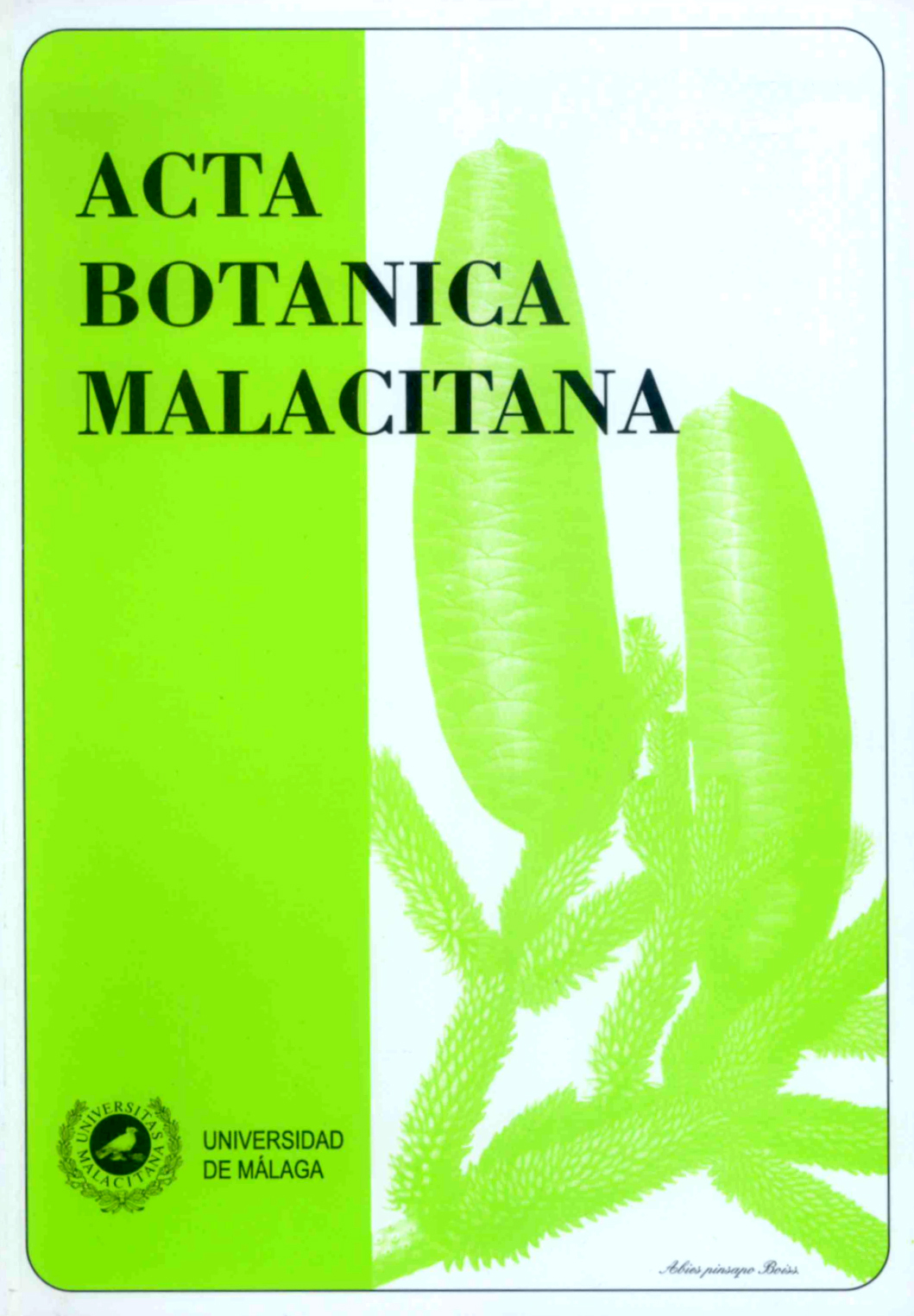Vegetation and flora of the Paraje Natural Desfiladero de los Gaitanes and its surroundings (Malaga, Spain)
DOI:
https://doi.org/10.24310/abm.v39i1.2599Abstract
In this paper, catalogues of flora and plant communities are performed and successional dynamism and vegetation landscape are described for the Natural Area and Site of European Importance Desfiladero de los Gaitanes (Malaga, Andalusia, Spain). The macrobioclimate is Mediterranean, with termo- and mesomediterranean thermotypes (vegetation belts) and dry and sub-humid ombrotypes. The study area is geologically composed of limestone-dolomite, clay and calcareous sanstone; geomorphology is mountainous with altitudes of 100-1200 m. and it is placed in the Baetica phytogeographical province (Mediterranean region), with areas included in the Antequerano sector (limestone-dolomite mountains) and Malacitano-Axarquiense (calcareous sandstone mountains). The floristic catalogue consists of 586 taxa, highlighting endemism of the sectors such as Echium albicans subsp. fruticescens or Saxifraga reuteriana, and 12 threatened species, highlighting Hippocrepis tavera-mendozae and Scrophularia viciosoi both CR and also endemism. We have listed 50 plant communities and associations, among which stand out as new syntaxa the lastonares of Helictotricho arundani-Festucetum capillifoliae stat. nov., scrubs of Genisto equisetiformis-Cytisetum fontanesii lectotypus in this work and subassociations as scrubs on dolomites Genisto speciosae-Ulicetum parviflorii lavanduletosum lanatae lectotypus in this work and the juniper shrublands with Aleppo pine Asparago horridi-Juniperetum turbinatae pinetosum halepensis subass. nova. The successional dynamics is summarized in two climatophilous thermo and mesomediterranean vegetation series of Quercus rotundifolia and one thermo-mesomediterranean edafoxerophilous series of Juniperus turbinata. There are also two edaphohigrophilous series, one with Fraxinus angustifolia and other with Nerium oleander. In the frequent rocky places, 6 topogenous vegetation complexes (including one with Rupicapnos africana subsp. decipiens) and 3 edaphogenous (including one with Festuca mediterraneanea) are described. In the natural area, there are 7 major units of zonopotential landscape, characterized largely by the presence of Juniperus turbinata.Downloads
Download data is not yet available.
Metrics
Metrics Loading ...
Downloads
Published
2014-12-01
How to Cite
Pérez-Latorre, A. V., Casimiro Soriguer-Solanas, F., García-Sánchez, J., & Cabezudo, B. (2014). Vegetation and flora of the Paraje Natural Desfiladero de los Gaitanes and its surroundings (Malaga, Spain). Acta Botanica Malacitana, 39(1), 129–177. https://doi.org/10.24310/abm.v39i1.2599
Issue
Section
General
License
All information related to the licensing of published works in Acta Botanica Malacitana and copyright can be found in our Editorial Policy.







1.png)
